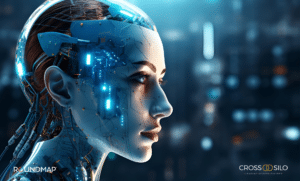This website is dedicated to making positive and lasting organizational changes possible. Positive change differs from traditional change methods. It focuses on strengths rather than weaknesses. Once made manifest, these strengths become a launching pad for people’s imagination of how the future could and should look like.
Positive change is built on sound scientific evidence suggesting that people will better understand their full potential when aware of their strengths. By utilizing this shared awareness of what is possible, the company elevates to new heights. Thousands of companies and organizations worldwide already harnessed the power of positive change.
Positive change, and the Positive Inquiry™ method, differs radically from traditional change methodologies. These ‘negative’ methods often include external consultants analyzing a system’s flaws, problems, and weaknesses. Once isolated, a report suggests applying some fix to mitigate or eliminate the problem.
Why is positive change sometimes overseen as an alternative method of organizational change? This goes back to how work is traditionally organized and optimized.
On the eve of mass production in the late 19th century, a young American named Frederick Taylor performed time studies in shops and factories. He found that by close observations of individual workers, efficiency could be increased by eliminating waste time and motion. Consequently, more complex tasks are divided into smaller tasks performed by what would later become specialists. However, performing these tasks repeatedly made work boring and demoralizing.
Taylor’s principles are known as the division of labor and specialization. In the following years, organizations began to apply these principles to almost every department, from marketing to distribution. As a result, organizations today are jampacked with specialists with very limited cross-disciplinary understanding. To some extent, it is fair to say that employees are a cog in the machine called the corporation.
What happens when a machine breaks down, as in Charly Chaplin’s brutally honest Modern Times? Right, you fix the part that is broken. These reductionists, as we call them, are convinced that progress comes from fixing (e.g., replacing or optimizing) the failing part of the system. Hence, the preference for problem-solving change methods.
On the other hand, constructionists are convinced that focusing on what went right is a much more ‘constructive’ way of leading change. While every system has weaknesses, they make sure these weaknesses become irrelevant.
Peter Drucker: “The Task of Leadership is to Create an Alignment of Strengths in Ways that Make a System’s Weaknesses Irrelevant.”
Constructionists suggest that the meanings and values assigned to different aspects of an organization are not inherent but are socially constructed through interactions among organizational members. It focuses on creating a shared understanding of the organization and its goals among its members through communication and other forms of discourse. It sees organizations are dynamically evolving human systems, not as static machines.
While reductionists’ views are more analytical and quantitative, constructionists take a more holistic and qualitative approach, emphasizing the importance of culture and context in shaping organizational behavior and decision-making.
Author
-
Edwin Korver is a polymath celebrated for his mastery of systems thinking and integral philosophy, particularly in intricate business transformations. His company, CROSS/SILO, embodies his unwavering belief in the interdependence of stakeholders and the pivotal role of value creation in fostering growth, complemented by the power of storytelling to convey that value. Edwin pioneered the RoundMap®, an all-encompassing business framework. He envisions a future where business harmonizes profit with compassion, common sense, and EQuitability, a vision he explores further in his forthcoming book, "Leading from the Whole."
View all posts Creator of RoundMap® | CEO, CROSS-SILO.COM





